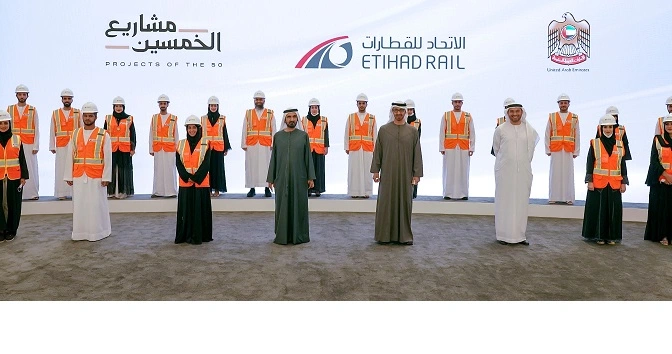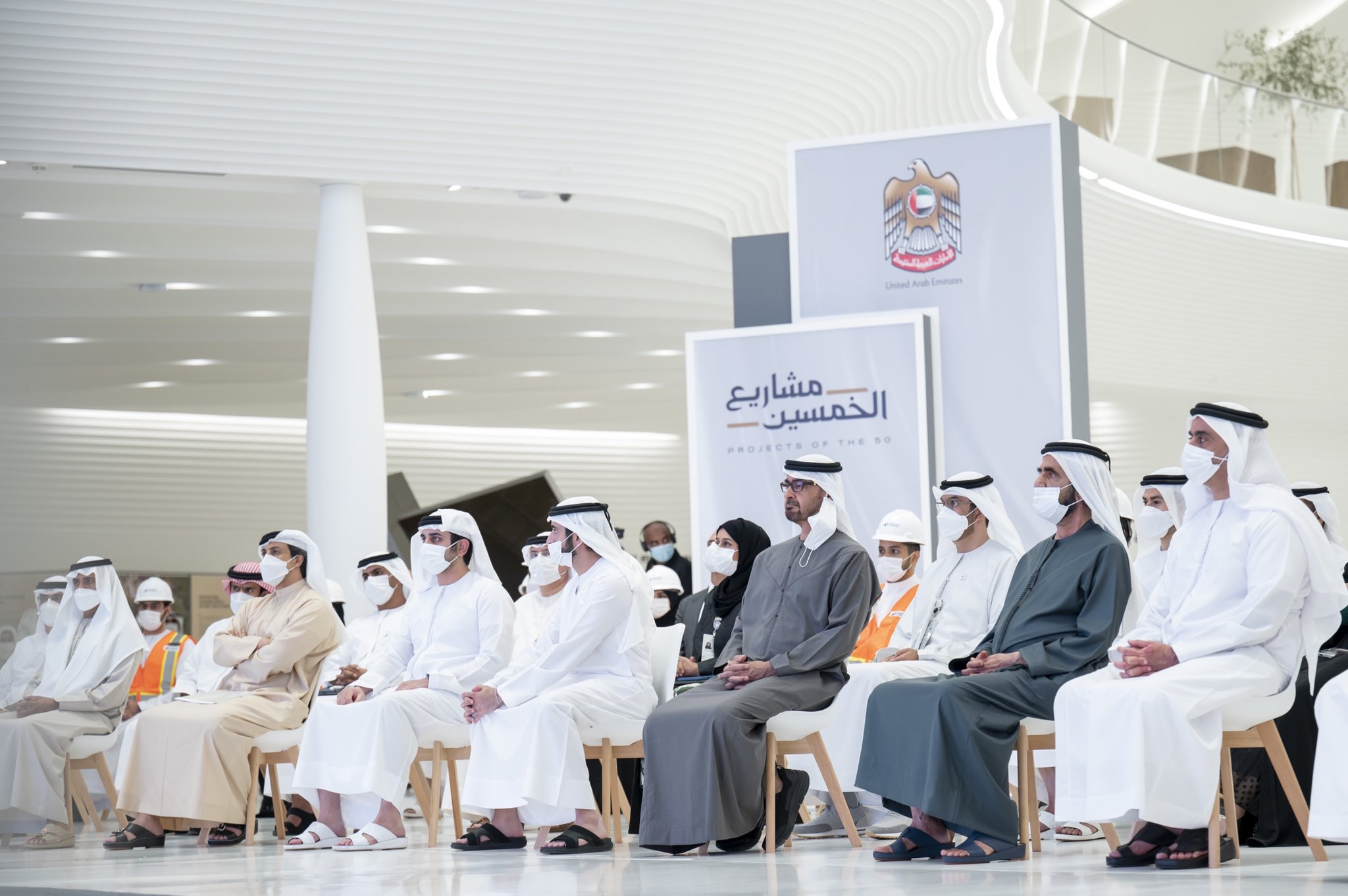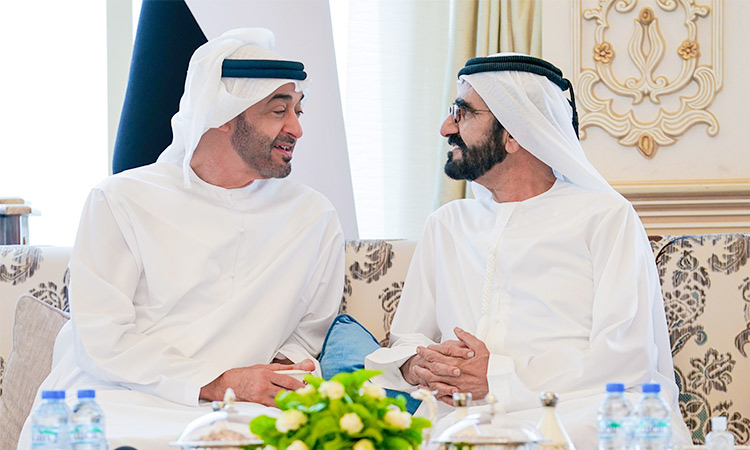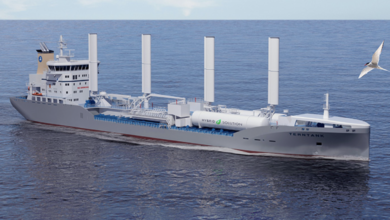Mohammed bin Rashid and Mohamed bin Zayed launch UAE Rail Program

The UAE Government announced the launch of the UAE Railways Program, the largest integrated system for transporting goods and passengers across the country, according to the company’s release.The program constitutes an integrated strategy for the railway sector in the UAE for the coming decades, as it includes a national network of railway projects that link the emirates and the key cities of the country. The first phase of the Etihad Rail has been fully operational since 2016, with opportunities to expand beyond the borders of the UAE.
The UAE Railways Program falls under the ‘Projects of the 50’ which is a series of developmental and economic projects that aim to accelerate the UAE’s development, transform it into a comprehensive hub in all sectors and establish its status as an ideal destination for talents and investors.
The UAE Railways Program was launched during a special event celebrating the projects of the 50, held at Dubai’s EXPO 2020. The event highlighted the objectives of the program and the phases of the “Etihad Rail” project, which connects Ghuwaifat on the border with Saudi Arabia to the port of Fujairah on the Eastern Coast.
The UAE Railway Program aims to develop a sustainable road transport system that supports economic development efforts in all sectors, including the environment, industry, and tourism. The program also aims to connect the emirates of the UAE and provide a reliable transportation system.
The investments of the UAE Railway Program amount to AED50 billion, 70% of which target the local market. The program contributes to providing more than 9,000 jobs in the railway sector and supporting sectors by 2030.
The program contributes to reducing 70-80% of carbon emissions over the next 50 years, a move that supports the UAE’s efforts to preserve the environment and achieve its goal of carbon neutrality.
The UAE Railway Program includes three key projects; the first project is the Freight Rail, which includes the Etihad Rail freight services.
The second project is the Rail Passenger Services that aim to connect 11 cities with the UAE from Al Sila to Fujairah. At a speed of 200 km/h, the Rail Passenger will connect 11 cities within the UAE, where passengers can travel from Abu Dhabi to Dubai in 50 minutes, and from Abu Dhabi to Fujairah in 100 minutes.
By 2030, the number of passengers is expected to reach more than 36.5 million annually.
The third project is the Integrated Transportation Service, where an innovation center will be established to ensure the integration of smart transportation solutions. A network of light rail will be connected to the Rail Passenger System to facilitate transportation inside UAE cities.
Additionally, Rail Passenger Services and solutions will also be developed to allow planning and booking trips, integrating logistics operations, port and customs services, and providing integrated logistics solutions.

The UAE Railway Program creates enormous economic opportunities amounting to AED200 billion; the estimated benefits of reducing carbon emissions amount to AED21 billion, road maintenance AED8 billion, in addition to achieving tourism benefits estimated at AED23 billion during the next 50 years, meanwhile the public benefits on the UAE economy will reach AED23 billion.
The Stage One (the commercial activity) of Etihad Rail commenced in January 2016. Etihad Rail has transported more than 30 million tonnes of granulated sulphur (the equivalent of around 2.8 million truck trips).
Stage Two constructions were launched in 2018, where 70% of was achieved in less than 24 months despite the challenges presented by the COVID-19 pandemic, Etihad Rail has continued to forge ahead and complete the project according to its clearly defined goals and comprehensive work plan.
180 entities have been cooperating and more than 40 thousand official papers have been issued. 27 thousand people are working in more than 3000 constructions sites across the country achieving 76 million working hours.















